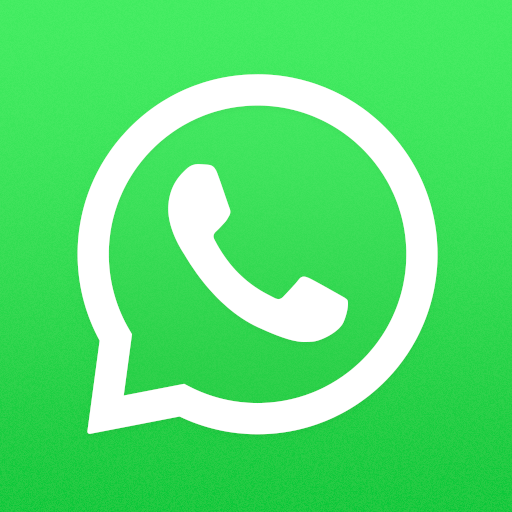Best productivity apps for your smartphone
28th June 2024
Jake Hopkins
Are you facing challenges in maintaining organization and efficiency in your daily tasks? Consider utilizing the following top productivity applications designed for smartphones.
Whether it's task management through Todoist or mindfulness practices using Headspace, these applications can assist you in streamlining your workflow and enhancing overall productivity.
Given the multitude of available options, determining the most suitable app for your needs may be a daunting task. This article will discuss strategies for selecting the optimal productivity application, provide recommendations for maximizing their effectiveness, and offer guidance on achieving a harmonious balance between work and leisure.
Let us delve into the details!
Top Productivity Apps for Your Smartphone
Explore the top productivity applications available for your smartphone that have the potential to transform the way you work and effectively manage your tasks. These applications provide a diverse array of features aimed at enhancing organization, time management, and overall productivity.
Through the utilization of these applications, individuals have the ability to generate to-do lists, establish reminders, and prioritize tasks, consequently ensuring that critical deadlines are consistently met. Certain applications also encompass features for tracking goals, give the power toing users to monitor their progress and sustain motivation. The user-friendly interfaces of these productivity applications render them accessible even to individuals who are new to digital organizational tools.
By harnessing the capabilities of these tools, individuals can streamline their workflow, diminish tendencies toward procrastination, and enhance overall efficiency within both their professional and personal domains.
1. Todoist
Todoist is a prominent task management application renowned for aiding users in maintaining organization, prioritizing tasks, and enhancing overall productivity efficiently. Its intuitive interface and robust features work in concert to streamline task management processes and optimize productivity levels.
A distinguishing feature of Todoist is its capacity to categorize tasks into projects, labels, and due dates, offering users a systematic approach to organizing their to-do lists. Moreover, Todoist incorporates collaborative tools that give the power to team members to collaborate seamlessly on shared projects, thereby fostering teamwork and elevating project completion rates. The application also furnishes users with productivity insights, including task completion trends and productivity streaks, which serve as motivational tools to sustain progress and achieve more. By encompassing these capabilities, Todoist fosters a comprehensive strategy towards task management, rendering it a favored option for individuals and teams alike who aspire to enhance productivity levels and streamline workflows.
2. Google Calendar
Google Calendar represents a versatile scheduling tool that facilitates effective time management and seamless synchronization across various devices. Its intuitive interface and smart notifications position it as a preferred application for maintaining organization and bolstering productivity.
Through Google Calendar, users can categorize events into distinct calendars, utilizing color-coding for streamlined visualization and prioritization. Furthermore, the platform supports calendar sharing, allowing for collaborative planning and coordination amongst colleagues or family members.
The integration of Google Calendar with other Google services such as Gmail, Drive, and Meet optimizes workflow efficiency by ensuring all elements of a user's schedule are interconnected and accessible from a singular central location. These integrations serve to enhance productivity by minimizing the potential for double bookings or missed appointments.
3. Evernote
Evernote represents a robust note-taking application that provides a comprehensive array of organizational tools aimed at enhancing productivity and optimizing workflows. Its extensive feature set coupled with an intuitive design renders it a favored option for effective note management.
The application permits users to generate various note formats, encompassing text, audio, images, and PDFs, consolidating them within a centralized repository. Leveraging its sophisticated search functionalities, individuals can readily pinpoint specific notes through keywords or tags, hence saving time and augmenting overall organizational efficiency.
Moreover, Evernote facilitates the establishment of reminders, formulation of to-do lists, and collaborative undertakings, promoting seamless teamwork dynamics. The application seamlessly synchronizes across multiple devices, ensuring constant access to notes regardless of location, thereby further enhancing efficiency and productivity within personal and professional spheres.
4. Trello
Trello serves as a versatile project management tool that facilitates collaboration, communication, and seamless integration among team members. Its intuitive interface and comprehensive features position it as an optimal choice for optimizing project workflows.
Through the utilization of Trello, teams have the capability to generate boards for various projects, delegate tasks to specific team members, and establish deadlines to ensure the timely achievement of project milestones. The interactive platform of Trello enables team members to engage in real-time communication, share progress updates, and offer feedback effortlessly.
Trello's inclusive features, including calendar synchronization, file attachments, and customizable labels, significantly contribute to enhancing workflow efficiency and promoting project coordination. These functionalities give the power to teams to maintain organization, prioritize tasks efficiently, and collaborate effectively in pursuit of project objectives.
5. Forest
Forest is a distinctive productivity application designed to enhance focus and reduce distractions by encouraging users to refrain from using their smartphones during work or study sessions. Through its innovative approach, Forest aims to improve productivity by creating an environment that is free from interruptions.
The application employs a creative concept of planting virtual trees that grow as users resist the urge to check their phones. This gamified feature not only acts as a visual prompt to maintain concentration but also fosters a sense of achievement as users witness the growth of their virtual forest. By establishing specific focus periods and utilizing Forest as a tool to monitor progress, individuals can efficiently manage their time and tasks, resulting in enhanced productivity and a more conducive environment for work or study.
6. Headspace
Headspace is a mindfulness application that offers guided meditation sessions designed to help users alleviate stress, enhance mental clarity, and improve overall well-being. Through its calming exercises, Headspace aims to promote relaxation and concentration to increase productivity.
By integrating strategies such as deep breathing, body scan exercises, and visualization, Headspace facilitates individuals in achieving a state of mindfulness that can result in reduced anxiety levels and a more composed approach to daily obstacles. The application's emphasis on embracing the present moment enables users to develop a sense of awareness and emotional resilience, crucial elements in effectively managing stress.
These mindfulness techniques not only nurture inner peace and equilibrium but also bolster cognitive function, creativity, and decision-making, ultimately enriching the individual's overall work-life balance and productivity.
How to Choose the Right Productivity App for You
The process of selecting the most suitable productivity application for one's needs entails the consideration of various factors, such as functionalities, user interface, and cross-device compatibility. To make a well-informed decision, it is imperative to carefully evaluate one's requirements and preferences.
It is advisable to contemplate one's typical task organization and scheduling methods. Does one gravitate towards a streamlined and user-friendly interface that facilitates easy navigation? Additionally, one should ponder whether features like task prioritization, time tracking, or goal setting are necessary to augment time management capabilities.
Furthermore, the preferred method of accessing the application should be taken into account. Whether predominantly utilizing a smartphone, tablet, or computer, determining cross-device compatibility is crucial for fluidly transitioning between platforms to optimize workflow management.
1. Consider Your Needs
When selecting a productivity application, it is imperative to evaluate your specific needs concerning task management, organization, and time management. Having a clear understanding of your requirements will enable you to pinpoint the most appropriate application for optimizing your productivity.
Take into account the nature of your daily tasks and determine whether you necessitate features such as prioritization, reminders, or collaborative tools. Additionally, assess your preferred organizational style - whether you lean towards visual layouts, lists, or kanban boards. Time efficiency is a critical factor in enhancing productivity; therefore, seek out applications that provide time-tracking, scheduling, and integration capabilities.
By aligning the functionalities of an application with your individual needs in these areas, you can customize your productivity solution to align with your distinct workflow and enhance your ability to efficiently complete tasks.
2. Read Reviews and Ratings
Ahead of selecting a productivity application, it is advisable to review feedback and ratings provided by other users to evaluate the application's performance, reliability, and user satisfaction. Utilizing this feedback can aid in making a well-informed decision.
Examining user reviews allows for the acquisition of valuable insights into the application's functionality within real-world scenarios. It is important to consider both positive and negative feedback to obtain a comprehensive understanding of the application's strengths and weaknesses.
Endorsements from fellow users may also disclose features that are compatible with your specific requirements or identify potential drawbacks to take into account. Ultimately, investing time in perusing reviews and ratings can enable you to choose a productivity application that aligns effectively with your workflow and preferences.
3. Try Out Free Versions
Many productivity applications provide complimentary versions or trial periods that allow individuals to test the application's features before committing to a subscription. Utilizing the free version allows users to evaluate the application's appropriateness for their requirements.
During these trial periods, users can explore various functionalities, including task management tools, collaboration features, and customization options, to assess if the application aligns with their workflow and preferences. Experimenting with the free version offers users an opportunity to evaluate the application's performance, user interface, and overall user experience without incurring any financial obligations. By leveraging these trial opportunities, users can make well-informed decisions when determining whether to invest in a subscription for advanced features and ongoing access.
4. Check for Compatibility and Integration
When considering a productivity application, it is imperative to verify its compatibility with your devices and ensure seamless integration with other tools or platforms utilized. Opting for a cross-platform application can significantly improve workflow efficiency and connectivity.
This not only optimizes work processes but also facilitates enhanced flexibility and accessibility across various devices. By selecting a multi-platform application, users can seamlessly transition between smartphones, tablets, and computers without disruptions in functionality. These applications are engineered to operate cohesively irrespective of the operating system or device, thereby fostering a seamless user experience and reducing the time spent on data synchronization or file transfer.
In the contemporary digital landscape, emphasizing compatibility and integration features during the selection of a productivity application is essential for maximizing productivity and reducing potential workflow interruptions.
Tips for Maximizing Productivity with Apps
Maximize your productivity by implementing the following recommendations and techniques for effectively utilizing productivity applications on your smartphone. These methods are designed to assist you in saving time, enhancing organizational skills, and optimizing communication to achieve optimal efficiency.
To optimize time management, it is advisable to configure reminders and notifications within your productivity applications to ensure timely completion of important tasks and meeting deadlines. Furthermore, the utilization of features such as task categorization and priority settings can aid in efficiently organizing your workload. Additionally, communication tools like shared calendars and collaborative project boards can facilitate seamless interaction with team members, fostering effective collaboration. By incorporating these time-saving strategies, organizational tools, and communication methods into your daily regimen, you can maximize the utility of your productivity applications and elevate your overall efficiency levels.
1. Set Realistic Goals
It is imperative to establish realistic goals when utilizing productivity apps to facilitate efficient time management and enhance overall productivity. By clearly defining objectives, users can align their tasks with broader goals, thereby improving their productivity.
This methodical approach ensures that each task completed directly contributes to the achievement of significant milestones, fostering a sense of progress and fulfillment. Setting achievable goals within productivity apps enables individuals to effectively prioritize tasks and manage their time efficiently. It also promotes a structured workflow, diminishing distractions and enhancing focus on critical assignments. By integrating fundamental aspects of goal setting, time management, and efficiency into their daily schedules, users can optimize their productivity levels and attain desired results.
2. Use App Features to Their Full Potential
To fully unleash the potential of productivity applications, individuals should thoroughly explore and effectively utilize all the available features. Customizing the application settings to align with one's workflow and preferences can greatly enhance efficiency and streamline task management.
By dedicating time to familiarize themselves with the diverse features and tools embedded within the application, users can unearth innovative methods to bolster their productivity. Adapting the application settings to correspond with the specific demands of daily tasks facilitates a seamless integration of the application into their workflow. This level of customization not only saves time but also guarantees that the application operates in sync with their unique work processes. Embracing these customization options give the power tos users to establish a personalized workspace that optimizes efficiency and enables them to accomplish more within a shorter timeframe.
3. Find a Balance Between Work and Rest
It is essential to maintain a balance between work and rest to ensure sustainable productivity when utilizing smartphone applications. Designating time for relaxation and self-care can improve efficiency and prevent burnout, ultimately contributing to long-term productivity enhancements.
The implementation of effective time management strategies is imperative to allocate sufficient time to tasks while also giving priority to activities that enhance mental and physical well-being. By integrating breaks into the work schedule and establishing boundaries for screen time, individuals can cultivate a more balanced work-life equilibrium. It is crucial to acknowledge that a rejuvenated mind is more adept at creativity and focus, leading to heightened productivity levels over time. Productivity should be viewed not merely in terms of maximizing work hours but also in terms of maintaining a healthy lifestyle that nurtures overall well-being.
4. Regularly Evaluate and Update Your App Usage
Regularly assessing and updating app usage is crucial for optimizing productivity and efficiency gains. Evaluating the efficacy of app features and seeking updates can enhance task management and streamline workflows.
Through consistent evaluations of app interactions, individuals can pinpoint areas for enhancement and potential efficiency gains. Remaining abreast of the most recent app updates and optimizations is essential to guarantee the utilization of the most current tools and features. Proactive app management can result in more seamless workflows, enhanced time management, and an overall increase in productivity in both personal and professional environments.















